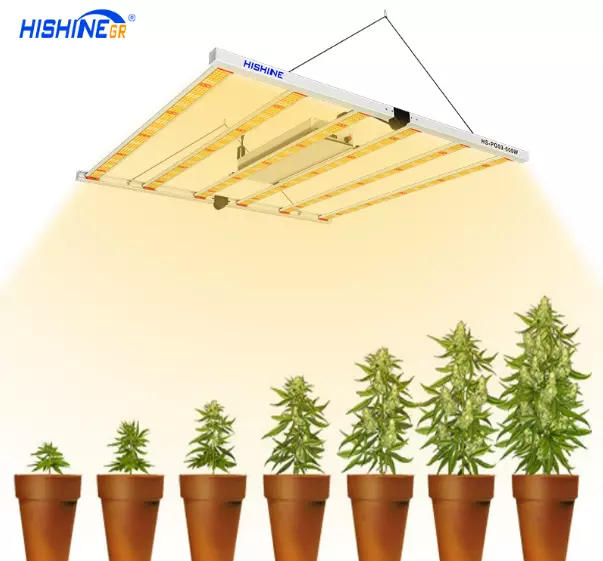MENU
The effect of LED plant light flux on plant growth lamp parameters
All visible light sources have an important parameter called luminous flux, and grow lights are no exception. The luminous flux is of great significance to human visual perception. On the one hand, depending on the luminous flux, the light response felt by the naked eye is also different; Same.
Understanding the relationship between the naked eye and luminous flux, what is the relationship between LED plant growth light flux and plants? Let's first look at the concept of luminous flux.
Luminous Flux Concept
Luminous flux refers to the radiant power that the human eye can feel, and is the product of the radiant energy of a certain band per unit time and the relative visibility of the band. English: luminous flux, the unit is lumens (lm). Because the relative visibility of the human eye to different wavelengths is different, even if the radiation power of different wavelengths is the same, the luminous flux is not equal. Conversely, even if the luminous flux is the same, if it is light of different wavelengths, its radiation power is also different.
Luminous flux calculation method
Luminous flux refers to the derived amount of radiant flux evaluated in accordance with the international standard human visual characteristics evaluation, the representative symbol is (Φ), and its calculation formula is:

Among them, Km is the maximum value of spectral luminous efficacy 683lm/W, V(λ) is the standard standard spectral luminous efficiency function, Φeλ is the spectral density, and λ is the spectral luminous efficiency. 1lm is equal to the luminous flux emitted by a point light source with a uniform luminous intensity of 1 candela (1cd) within a unit solid angle of 1 steradian (sr), that is, 1lm=1 cd·sr.
The relationship between LED plant light flux and plant growth
Luminous flux can be simply understood as the amount of light passing through unit time and unit area. Just like water flow, it flows out, flows through or flows into less water in one second, and the luminous flux flows out, flows through or flows into less light in seconds. That is to say, the red light with a wavelength of 680 can reach 1000 (lm) under certain conditions, and the green light with a wavelength of 520 can also reach 1000 (lm) under another condition.
For plants, the most important thing about LED grow lights is to emit the red and blue light required by plants, or to simulate full-spectrum grow lights of sunlight to assist in growing high-quality and high-quality plants, which is the most important factor affecting the lighting effect of LED grow lights. The main factors include light quality, light intensity, and light duration. Therefore, it is also red light and green light with a luminous flux of 1000 (lm), one type of plant absorbs a lot, and the other plant almost does not absorb it, so the luminous flux can not be fully used as an LED plant growth light, which may affect the effect of plant fill light. the elements of.


However, if it is the same wavelength of red light that plants need, the greater the luminous flux, it indirectly means that the red lamp beads of the LED plant light emit a large amount of light, the plants can get more sufficient light, and the growth effect will be better.
To sum up, for the field of planting plants with LED grow lights, the luminous flux is not temporarily used as the main parameter to measure the value of LED grow lights, but it can be used as a reference. If the wavelength is determined, the light source with greater luminous flux The more light it can provide.